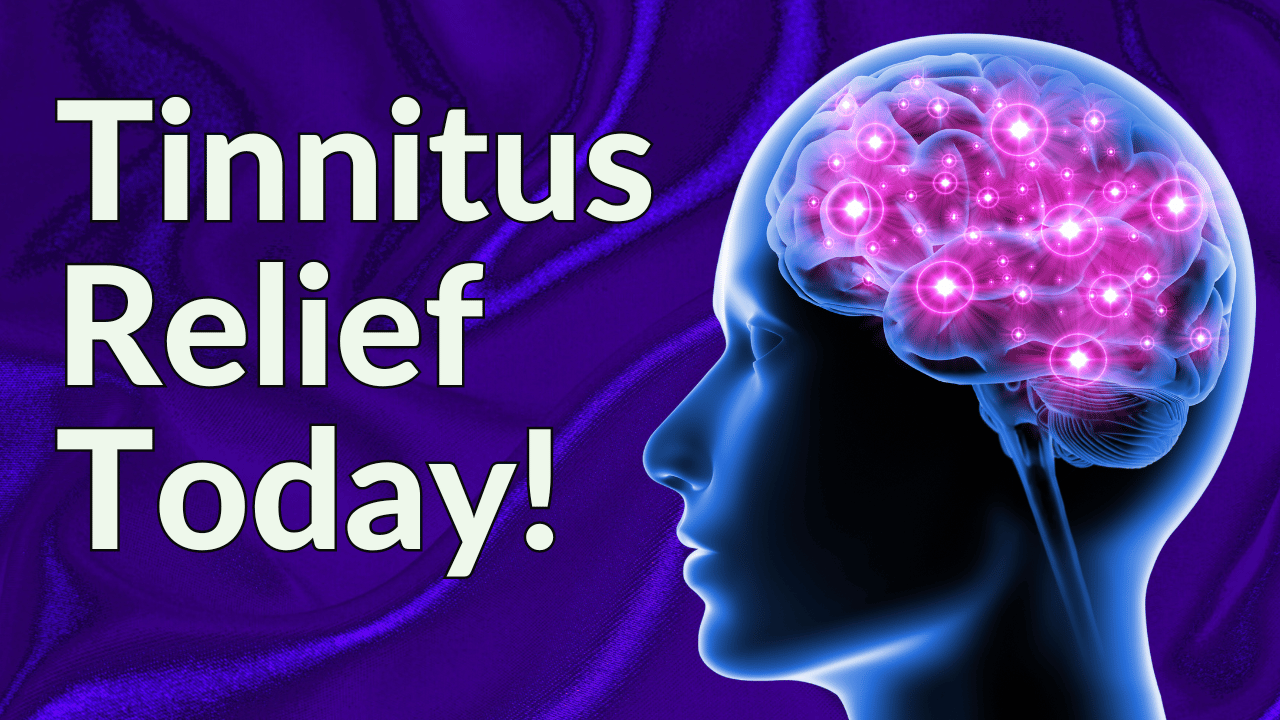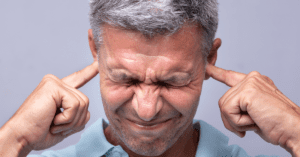Visual snow and tinnitus are not commonly linked to one another; tinnitus is a condition affecting the ears, while visual snow is a condition affecting the eyes. Nevertheless, visual snow syndrome’s visual symptoms and tinnitus may actually be linked. From the root cause of the visual symptoms of visual snow and the auditory symptoms unique to tinnitus to the treatments provided for both, tinnitus and Visual Snow Syndrome (VSS) may be more alike than you may think. Before diving into the particulars of these conditions, however, let’s take a close look at what exactly VSS is and how it affects the entire visual field.
What Is Visual Snow Syndrome?
The American Academy of Ophthalmology defines visual snow as a form of visual hallucination characterized by the perception of small dots in the visual field and visual issues including impaired night vision.
"Treble Health helped me reduce my tinnitus by about 80%, and now I can live my life again!"


"Treble Health helped me reduce my tinnitus by about 80%, and now I can live my life again!"
– Steve D.
Book a free consultation to learn which Treble Health solution is right for you. Join Steve and thousands more who have found lasting tinnitus relief.
Visual snow is a hallucinogen persisting perception disorder and is further categorized into two groups of visual symptoms. These groups within the visual snow population include:
- Pulsing VSS. Dots will be the same color as their background (i.e., lighter colored dots will appear on lighter colored backgrounds). Because the colors are similar shades, the dots may appear to be pulsing as they disrupt your line of sight.
- Broadband VSS. Dots will be the opposite color as their background (i.e., darker colored dots will appear on lighter colored backgrounds). These dots are less likely to appear to be pulsing and are more likely to disrupt the visual pathway to a substantial degree.
VSS is a disorder distinct from other visual impairments, in that it is frequently accompanied by headache disorders, and does not always come with additional visual symptoms like vision loss. VSS may involve migraine aura in conjunction with disruptions to the visual system.
What Is the Relationship Between Tinnitus and Visual Snow? Are They Similar?
There are many parallels that can be drawn between tinnitus and visual snow; after all, tinnitus is an auditory phantom perception and visual snow is a visual phantom perception disorder. In each case, the perception is unrelated to any external stimulus in the respective sensory modality and there is some disturbance during sensory processing that results in the perception of sound or visual cues that are generated internally. Patients with tinnitus and patients with visual snow may have many shared experiences. Some of these experiences may include:
- Mechanisms of generation. Although there are many theories related to the generation of tinnitus, some theories include hyperactivity or increased levels of gain in the central auditory nervous system. There is some evidence to suggest that visual snow may be linked to hyperactivity or aberrant neuronal activity in the visual pathway in the areas of the brain responsible for the perception of vision. Both are instances of neurological symptoms manifesting in sensory changes.
- Causes. Although tinnitus can be linked to many disorders and causes (most commonly, otologic disorders), sometimes there is no cause that can be determined. When this occurs, the disorder is considered to be “idiopathic.” This means it came about spontaneously without any discernible cause. Visual snow is often considered idiopathic, as well, and visual symptoms may arise without warning or without a readily identifiable cause.
- Comorbidities. There are many disorders that are commonly linked to tinnitus and visual snow syndrome. Some overlap (e.g., anxiety, migraines) and some do not. Many are based on emotional changes or headache disorders that can affect the entire visual field or the entirety of an individual’s ability to hear. Although visual snow does not necessarily have ties to vision loss, there may be additional visual symptoms, just as tinnitus may be linked to hearing loss and additional auditory symptoms.
Diagnosis of Visual Snow Syndrome
Conducting a comprehensive evaluation is key to accurately diagnosing Visual Snow Syndrome (VSS). This evaluation must include the patient’s physical symptoms, interviews of any disturbances experienced in their field and an analysis of risk factors- such as family mental health history. With this complete approach, VSS can be diagnosed without fail. Testing will typically involve the following evaluations:
- Physical exam. If a person is having tinnitus or visual snow syndrome without any other indications, the diagnosis should not show anything strange. Imaging studies can be utilized to rule out any medical conditions; yet, this isn’t required for every patient. These additional tests can serve to rule out a cause that should be medically managed.
- Personal questionnaires. VSS is considered a neurological and neuropsychiatric syndrome, which means that patient input is absolutely essential for an accurate diagnosis. During this evaluation, patients with visual snow will be asked about any visual disturbances they might experience, including the appearance of the visual static, as a spotted or dotted field of vision is the primary symptom of the disorder.
Once visual static has been diagnosed, patients with this visual syndrome can move on to treatment.
Diagnosis of Tinnitus



The diagnosis of tinnitus involves taking a close look at all aspects of a patient’s experience. Just as patients with visual snow must provide the visual symptoms as well as a detailed family history and personal history, including the presence of typical migraine aura, possible impaired night vision, and other visual symptoms, potential tinnitus patients must detail any other auditory symptoms they may be experiencing to their doctor or audiologist. The evaluations of tinnitus will typically involve the following:
- Physical Exam. While tinnitus may not be considered a hallucinogen persisting perception disorder like VSS, physicians do need to rule out other potential causes of hearing changes. Typical migraine aura, for instance, could potentially point to tinnitus, as the two are often comorbid conditions, but acute injury to the ear is unlikely to warrant a tinnitus diagnosis before the damage has been addressed.
- Testing. Tinnitus is a persisting perception disorder, and as such, does not typically have root causes that are readily visible during an examination. Testing can include brain imaging to rule out other neurological concerns, but does not always require these types of interventions. Hearing testing to determine the presence or absence of a hearing loss is often completed.
- Personal questionnaires. Tinnitus diagnosis is largely based on personal reports, as the onset and duration of symptoms are not measurable on any standard test. During the assessment, the patient will likely be asked if there are any migraines or other personal concerns present, in order to rule out a more “curable” condition.
At the conclusion of the exam, tinnitus patients can move on to tinnitus treatment options that address the suspected root cause and manage symptoms.
Treatment of VSS
The treatment of VSS is considered a case of management, rather than a cure; there is currently no recognized cure for this neuropsychiatric syndrome characterized by disruptions to the visual field. Instead, the following interventions and steps will likely be utilized.
- Counseling. Counseling and education may be beneficial for individuals who have conditions like tinnitus and visual snow. The AAO indicates that “explanation and counseling is essential” in treatment of visual snow syndrome and counseling may also be used to treat depression and address any mental health concerns that may be contributing to visual snow patients. While visual snow is not currently listed in the diagnostic and statistical manual as a symptom of depressive and anxiety disorders, the two are commonly diagnosed in the same people, and mood disorders may precede or follow the onset of visual snow symptoms.
- Alleviation strategies. Just as auditory disorders may use avoidance practices to minimize symptoms, visual snow patients can utilize strategies to minimize triggers that can spur an increase in symptom severity. For example, AAO recommends avoiding bright lights and using blue light blocking glasses, among other strategies. By managing visual disturbances found elsewhere in one’s environment, patients may experience some relief from visual snow syndrome and any other visual symptoms related to the syndrome.
- Medications. Some medications may be appropriate for inclusion in the treatment plan for both tinnitus and visual snow, though medication often differs between the disorders. Visual snow is often treated using seizure medications, and patients reported some relief when using Lamotrigine. However, you should work closely with your physician to determine what treatment options may be appropriate, as not all medications are appropriate for all cases.
- Future expectations. There is no “cure” for visual snow–another characteristic shared with tinnitus. There are, as mentioned above, strategies that may lessen the effects of these problems, and many patients reported significant decreases in the clinical presentation of the syndrome when using a combination of the aforementioned treatments. Severe presentation is more likely to occur with a comorbid migraine diagnosis, but not all members of the general population with migraine disorders will experience VSS symptoms.
Treatment of Tinnitus
The treatment of tinnitus involves a mixture of treating the clinical features of the disorder and the potential physical triggers behind its onset. This means addressing any comorbid diseases or conditions associated with tinnitus, ranging from a migraine attack to a recent bout of exposure to loud noises.



- Counseling. Counseling can be a beneficial step toward understanding the inner workings of tinnitus, helping to make sense of its symptoms. Such sessions often delve into topics such as theories on how tinnitus is caused and ways to cope with it; this demystification process also helps assuage any anxiety or depression associated with the condition in both mild and more serious forms. With regular counseling, many patients experience relief from these unpleasant side effects of their disorder.
- Alleviation strategies. Sound therapy may be used in the treatment of tinnitus, as well as avoidance practices that can either reduce symptoms or lessen symptom onset. Tinnitus patients are often encouraged to avoid loud noises or prolonged exposure to heavy vibrations, and chronic tinnitus may respond well to these strategies.
- Medications. While there is no specific medication designed to treat tinnitus, certain drugs used to manage neurological disorders may help relieve the symptoms. Even though tinnitus is a distinct disorder separate from other conditions, like migraines or neurological issues, pharmaceuticals can still be effective in alleviating the discomfort associated with it.
- Future expectations. Unfortunately, there is no definitive cure for tinnitus. As it partly stems from a neurological disorder, the underlying cause and how to address it is largely unique to each person’s experience. Research has found that combining various approaches usually yields people with the most significant reduction in symptoms over time.
Ties Between Visual Snow Syndrome and Tinnitus
Although there are plenty of similarities between visual snow syndrome and tinnitus, ranging from the origin of the conditions to symptom severity and the onset of or ties to mental disorders and conditions, there are additional ties between the two. Tinnitus and VSS may be concurrent diagnoses, as one source found, suggesting that the neurological and neuropsychiatric links between both can affect more than one system. Disruptions to both the auditory system and the visual pathway can be caused by or experienced in conjunction with neurological changes and mood disorders, with crossover between the two.
As discussed above, most patients with visual snow syndrome and ringing in the ears can experience comorbid diseases, and many patients experience relief from either symptoms or negative responses to symptoms, even in severe presentation of those symptoms. Treatment options that can be used to address the clinical characterization of both simultaneously include therapy, taking a detailed medical history and addressing potential root causes, medications, and avoidance strategies.
Tinnitus and VSS both exist on a clinical continuum, with some cases having a more severe presentation, and others having only occasional tiny flickering dots or occasional ringing in the ears. Although both will present more challenges than the general population without a neurological disorder or alteration, there are numerous ways to successfully manage both the visual processing disorder known as VSS and the auditory processing disorder known as tinnitus.
For more information about Visual Snow Syndrome, visit the Visual Snow Initiative.
Next Step: Book Free Consultation
- 75% of patients reduced their tinnitus within three months after following our recommendations.
- "I feel like Treble Health literally gave me my life back." - Randy S. (verified customer)
- Join thousands of people who have reduced their tinnitus after scheduling a free consultation.


















